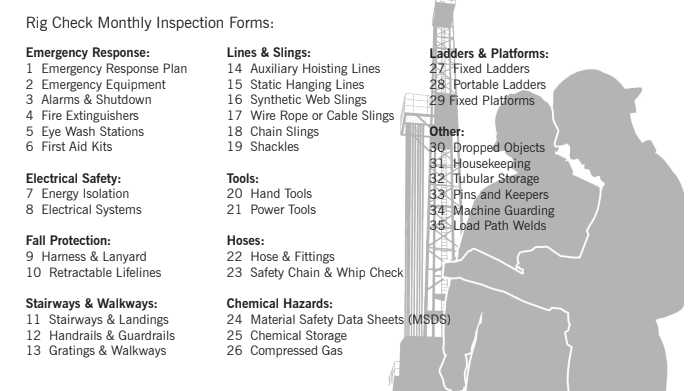
It's important to conduct a walkthrough inspection and job safety analysis on oil and gas storage tanks monthly or weekly. This quality management approach helps to ensure the safety of the environment and department. Dealing with natural gas requires a number of safety procedures to ensure the operation is secure. However, many oil and gas companies still use old-fashioned methods to create and maintain checklists, such as paper, clipboards, spreadsheets, and emails. The modern and efficient way to conduct inspections is via an oil and gas quality management application such as FTQ360.
FTQ360 is an inspection software that helps generate consistent inspections with improved reporting and monitoring of any issues.
What Should You Include in Regular Walkthrough Inspections?
Before we examine how to create an oil and gas inspection checklist using software, let's take a look at what you should include in a weekly walkthrough inspection:
-
An overview of the current condition of the tanks: Starting from your main location, other prominent locations and every other location you own for that matter. This should include the level of oil or gas in the tanks and any sediment that has accumulated. A visual inspection will also reveal any corrosion or damage to the tank.
-
An overview of other oil and gas facilities: This includes any changes that may have occurred since the last inspection, such as new construction or equipment, rig pipes, drill, tubular and more. It's also essential to check for potential hazards and warning signs, such as leaks or spills.
-
Any changes that have occurred since the last inspection: This could include anything from a change in the level of oil or gas to a new leak.
-
Photos or videos of any issues that have been found: These can help document any problems for future reference.
The recommended engineering practice to conduct walkthrough inspections is to have a checklist. This ensures that you have all bases covered. A good example of a popular industry checklist is the NIOSH Rig Inspection Checklist. Developed by the National Institute for Occupational Safety and Health (NIOSH) in conjunction with oil and gas safety experts, it consists of 35 inspection forms. The forms are designed to be used by rig workers to document the inspection of tools and equipment that is frequently seen on rotary and workover rigs. Each inspection form contains instructions for assessing and recording the equipment's condition. Federal legislation and industry-recommended practices, where applicable, are included.

(Image source: CDC.gov)
Problems with Old Inspection Checklist Methods
Unfortunately, the old ways of preparing and maintaining checklists that include paper and spreadsheets have a host of problems that include:
-
Inconsistent reporting: One of the main problems with paper and spreadsheet-based checklists is that it's difficult to ensure that all inspectors are using the same format. This can lead to inconsistency in the data that is collected and reported.
-
Lack of accountability: Another problem with paper and spreadsheet-based checklists is that it can be difficult to hold people accountable for their actions. For example, if an inspector forgets to check a box or fill out a form, there is no way to track this.
-
Difficulty tracking and trending data: Using paper and spreadsheet-based checklists can also be difficult to track and trend data. This is because these methods make it hard to share data between different departments or individuals.
-
Inefficient use of time: Finally, paper and spreadsheet-based checklists can be very time-consuming. This is because they require manual input of data, which can take a lot of time. Spreadsheets also have a steep learning curve for people who aren't accustomed to using them.
What Type of Safety Equipment do I Need Onsite?
In the oil and gas industry, more than any other, you will need to have suitable safety equipment and spaces onsite for a healthy work environment. Some of the tools you'll need are:
· Disposable Respirators.
· Fall Protection.
· Head and Face Protection.
· Hearing Protection.
· PAPR & Supplied Air Respirators.
· Protective Apparel
· Safety glasses
· Emergency escape air packs
These tools will ensure that not only your employees working on different gas sites are safe but that they also keep a consistent inspection approach with their safety as a priority.
Using FTQ360 to Create Inspection Checklists
FTQ360 is a web-based quality management software that helps companies in various industries, such as oil and gas, construction, power delivery, and home building, to improve their operations. One way it does this is by providing an easy way to create and manage checklists.
With FTQ360, you can create digital checklist templates for any type of inspection, whether it's a weekly walkthrough or a monthly progress report. In addition, you can customize the checklist template to your specific needs and requirements. You can also add photos or videos to checklist items for more detailed documentation.
Once the checklist template has been created, it can be easily shared with other users. This ensures that all inspectors are using the same format and that data is being collected consistently.
Additionally, FTQ360 makes it easy to track and trend data. This is because the software automatically generates reports based on the collected checklist data. These reports can be easily shared with different departments or individuals for further analysis.
Finally, FTQ360 is much more efficient than paper and spreadsheet-based methods. This is because checklist data is inputted electronically, which eliminates the need for manual input. Additionally, there is no need to create or maintain complex spreadsheets.
To learn more about how FTQ360 can help you improve your operations, schedule a demo today.
![[DOWNLOAD THIS GUIDE TODAY] HOW INSPECTION APPS ARE DRIVING DIGITAL TRANSFORMATION IN THE OIL & GAS INDUSTRY](https://no-cache.hubspot.com/cta/default/3353989/8b58e27f-154e-49a2-beaa-d972aede0717.png)
